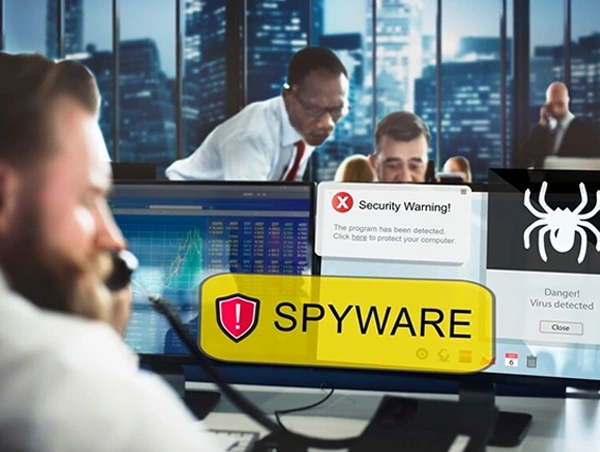Collaborative Efforts in Addressing Cyber Threats: A Closer Look
Evolution is often a forked pathway that leads to progression or regression, and with cyber threats evolving, it spells bad news for the digital community. This presents a problem for businesses, industries, and even nations. To counter the growing frequency and complexity of cyber threats, a unified approach involving organizations, law enforcement, and other stakeholders is warranted. A multi-pronged approach leaves nothing to chance and is essential for understanding these threats and effectively addressing them. Here, we’ll thoroughly explore how collaboration emerges as a key strategy for combating cybercrime and enhancing cybersecurity resilience.
The Position of Public-Private Partnerships
The government and private organizations are respectively taking steps to combat cyber threats, but combining their forces can exponentially augment their capability to protect digital information and infrastructure. These collaborations allow intelligence exchange between the government and private sectors and the interchange of technical expertise and resources necessary to implement effective security measures. When government agencies receive indications of potential threats, the quick dissemination of this information is crucial for private firms, notably how Fortinet mitigates and discloses vulnerabilities to private enterprises. Aside from collaboration, the joint public-private effort facilitates the development of industry standards that set cybersecurity best practices. When organizations within the same sector or across various sectors collaborate to create security frameworks, they not only protect their interests but also contribute to a more unshakeable digital ecosystem.
Improving the Reliability and Proactiveness of Intelligence Sharing
Sharing intelligence is crucial for enhancing the collective defense stance against cyber threats. As partially touched on earlier, the collaboration of public and private organizations can cast a wider net of intelligence than their individual efforts. Malicious entities don’t choose their targets randomly but rather systematically discover vulnerabilities and exploit them. They may set their sights on government agencies or private establishments, so when these two organizations look after each other’s backs, they are more likely to detect potential attacks. An organized intelligence report framework that includes indicators of compromise (IOCs), attack patterns, and breach reports is warranted for organizations to take proactive rather than reactive actions. The formation of intelligence centers like the Information Sharing and Analysis Centers (ISACs) and open-source threat detection and sharing platforms like MISP (Malware Information Sharing Platform) creates secure information-sharing channels. These channels help immediately notify at-risk sectors of possible threats through structured, machine-readable data.
Collaborative Incident Response
Emphasizing the multi-sided approach to addressing cyber threats, there should be measures in place in the event a cyber incident occurs. Ideally, a preventive approach is all that’s needed, but given the craftiness of digital bad actors, there will be threats that get past the defenses. This is where the next level of approach is critical – swift incident response. A quick response to threat infiltrations can be implemented by incident response teams. Their specialized backgrounds and training ensure that the response is effective and foresighted, stopping the threat and preventing future incursions. This team should be composed of IT professionals, communication specialists, and legal experts who can cover the bases of a cyberthreat incident. There’s damage assessment, situation control, and communication with affected parties that need immediate management, and a team with diverse expertise can comprehensively contain the incident and ensure nothing is overlooked.
Training and Awareness for a Defensive Stance
The collaboration of various organizations isn’t limited to the executive or administrative level; it spreads across all employees in the governmental or corporate hierarchy. That means educating employees about potential cyber threat risks and best practices. Cybersecurity training programs should be prioritized by collaborating organizations to ensure that employees and staff have sufficient knowledge to recognize phishing attempts, social engineering tactics, and other malicious activities. Training resources should be shared and collaborative to cultivate a sense of community and unity in facing cyber threats. With a well-trained workforce, organizations can build a more resilient cybersecurity infrastructure and reduce the likelihood of successful attacks.
The Impact of Technology on Collaboration
Technology is pivotal in facilitating inter-organization collaboration against cyber threats. The private sector is leading the innovation front in the public-private collaboration and is developing and integrating technological enhancements to improve cybersecurity measures. Artificial intelligence (AI) and machine learning (ML) technologies are exponentially augmenting the capabilities of cybersecurity vendors in threat detection, log management, network access control, and other solutions. Other technological advancements include the use of blockchain technology, cloud encryption, and extended detection and response (XDR), which raise the protection level for organizations. Leveraging technology protects industries from being outmaneuvered by malicious individuals and organizations.

A concerted effort is what it takes to devise an impregnable defense and deterrent against cyber threats. The coming together of diverse expertise from various industry leaders is essential in creating an interconnected protective barrier that leaves no digital opening for cyber threats. When organizations work together, share knowledge, devise efficient incident response, and prioritize continued education, they create a stronger, more resilient defense against ever-evolving cyber threats.








